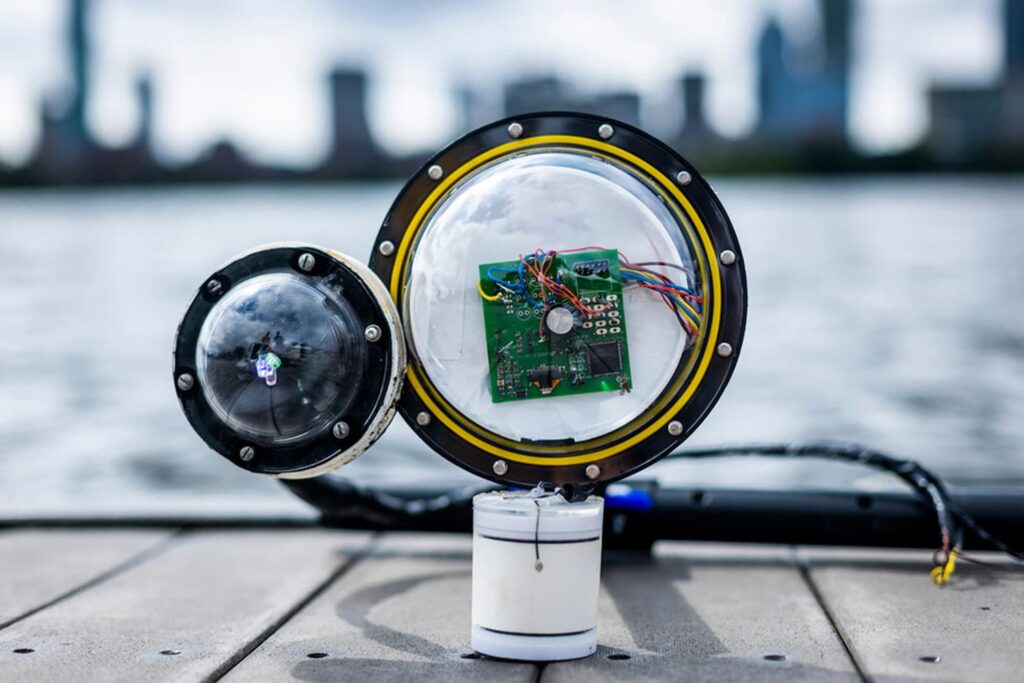MIT Creates a Prototype Battery-Free, Sound-Powered Underwater Camera
Ocean exploration is critical because it helps understand the ocean, as it is essential to manage, regulate, conserve, and use its resources effectively. Moreover, the sea is vital in supporting life on earth. It also affects the climate and weather patterns.
Ocean exploration is vital, as it is the first stride in the scientific process, observations, and recording of the ocean’s physical, archeological, chemical, geological, and biological aspects that will help future research. In addition, the ocean ecosystems have various materials that can help create energy, food, vaccines, and medical therapies.
One of the documentation tools used in ocean exploration is an underwater camera, and various cameras are already available. Underwater cameras should provide high-resolution photographs to make analysis better. However, it was only in 1926 that researchers could take color photographs underwater. Dr. William Longley and National Geographic photographer Charles Martin took the first color photograph of a hogfish. The camera they used had a special waterproof housing. They also used several pounds of highly explosive material, magnesium powder, as their flash to provide illumination. They rigged the explosive’s battery to the camera shutter. The magnesium exploded when the shutter tripped the battery to cause the powerful explosion that lit the underwater scene about 15 feet deep.
New battery-free underwater camera
Underwater cameras need powerful, long-lasting batteries, as diving into the ocean’s depths takes time. So research engineers at MIT came up with a solution—an underwater camera that does not need batteries. Instead, the camera gets power from sound waves, making it 100,000 times more energy-efficient than the underwater cameras available today.
The innovation will be of great help toward the exploration of unchartered regions of the ocean. The camera can take color photographs in deep environments based on the design. Moreover, it transmits the image data through the water wirelessly.
The power of the camera comes from the sound waves traveling through water. The camera converts the mechanical energy into electrical energy, which gives the camera almost an unlimited power source. Moreover, the camera employs sound waves to transmit the data to a receiver for image reconstruction.

Overcoming some of the underwater exploration challenges
According to scientists, around 95 percent of the oceans on earth remain unexplored. In addition, providing long-lasting power to an underwater camera is expensive. Likewise, it is challenging to mount the camera on a research vessel, and recharging the batteries may require a ship to go to the underwater camera’s location. All these things prevent the widespread exploration of the oceans.
The MIT-developed camera could help overcome the problem since it does not need an onboard source of power. In addition, it can last for several weeks, which will allow scientists to explore more remote parts of the ocean. For example, they can use the camera to monitor the health and development of fish in aquaculture farms or capture photographs of ocean pollution.
But the researchers believe that it can provide unparalleled assistance in climate monitoring, as many scientists need more ocean data to build their climate models. For MIT Associate Professor Fadel Adeeb Huh, it could help them build climate models accurately, and help researchers better understand the effects of climate change under the water.
Solving the issue of energy source
The MIT research engineers worked on creating an underwater camera that could operate autonomously for a long time, so they needed a device that could generate energy on its own while underwater.
They devised a camera that receives energy from transducers using piezoelectric materials positioned around the camera’s exterior. The materials help generate electricity through signals upon applying a mechanical force. For example, a sound wave in the water hitting the transducer causes it to vibrate, converting mechanical energy into electrical energy quickly. The sound waves come from various sources, from marine life to passing ships.
The camera does not use the harvested power immediately. Instead, it stores the energy until it can power the camera to take photos and deliver the data.
The researchers used commercially ultra-low power imaging sensors to keep power consumption to a minimum. The sensors only capture grayscale images. Likewise, they developed a flash that requires very low power. The researchers solved the problem of taking color photos using blue, green, and red LEDs.
Positive results of tests
The researchers tested their battery-less underwater camera in different environments. They captured color images of plastic bottles floating in a pond. They took high-quality photos of an African starfish that showed minute details. They also monitored the growth of Aponogeton ulvasius, an underwater plant living in a dark environment.
They have demonstrated the capability of their working prototype underwater camera. Now the researchers plan to increase its capacity to make it more applicable to actual settings. They want to increase its memory so the camera can take pictures and stream images. They also plan to add other features like filming real-time videos. Another feature they want to develop is to increase the depth the camera could reach from its current range of 40 meters.
